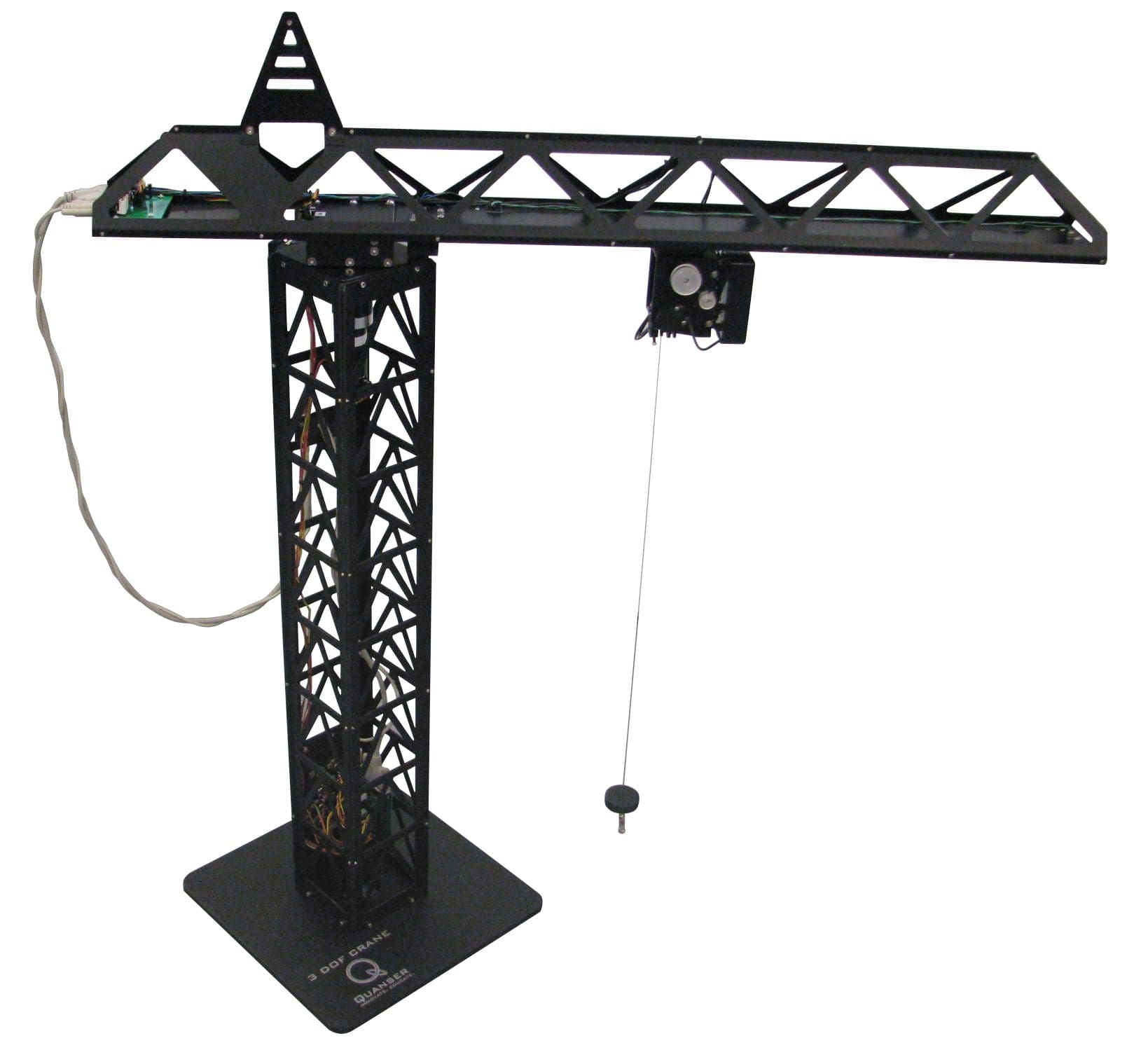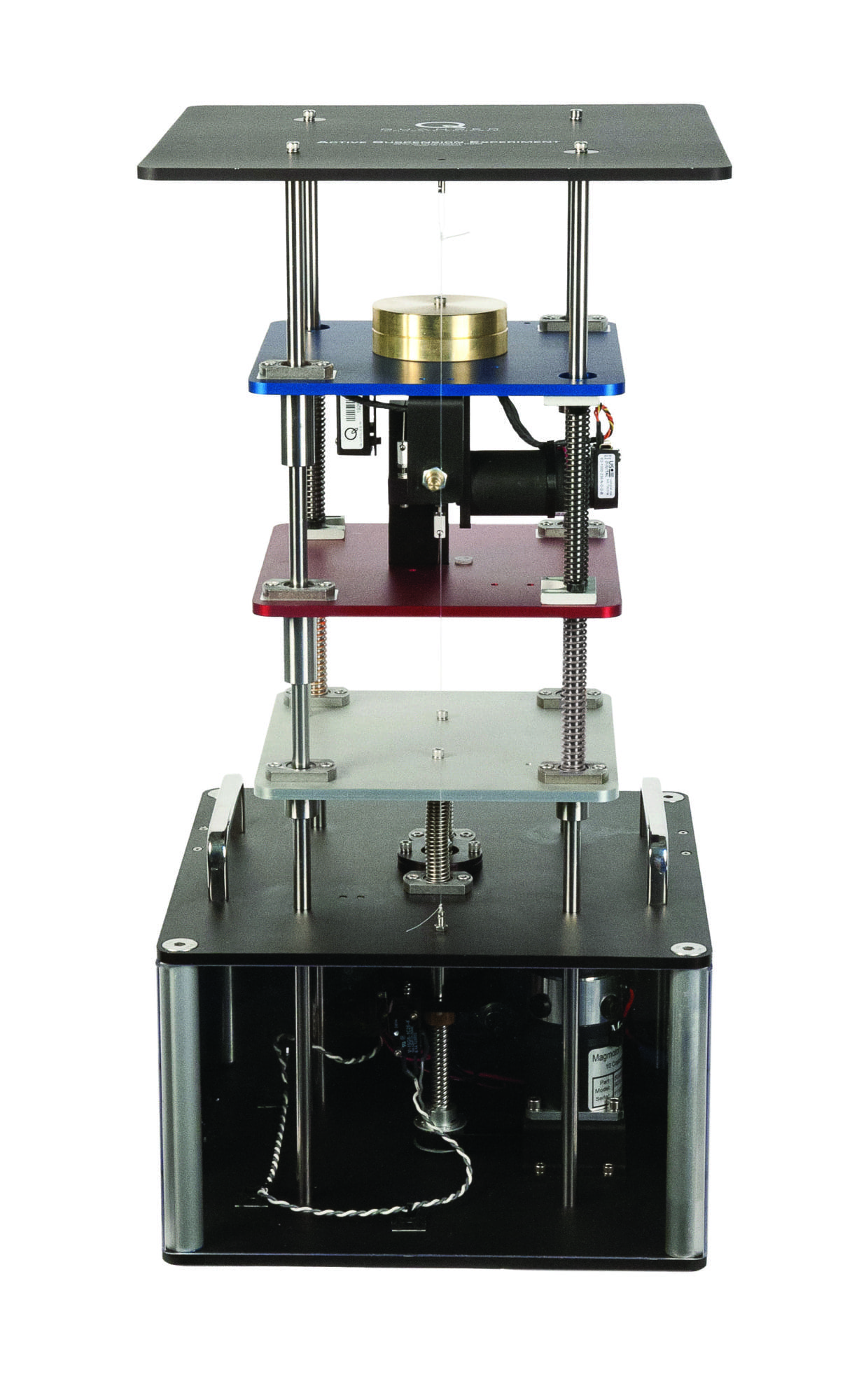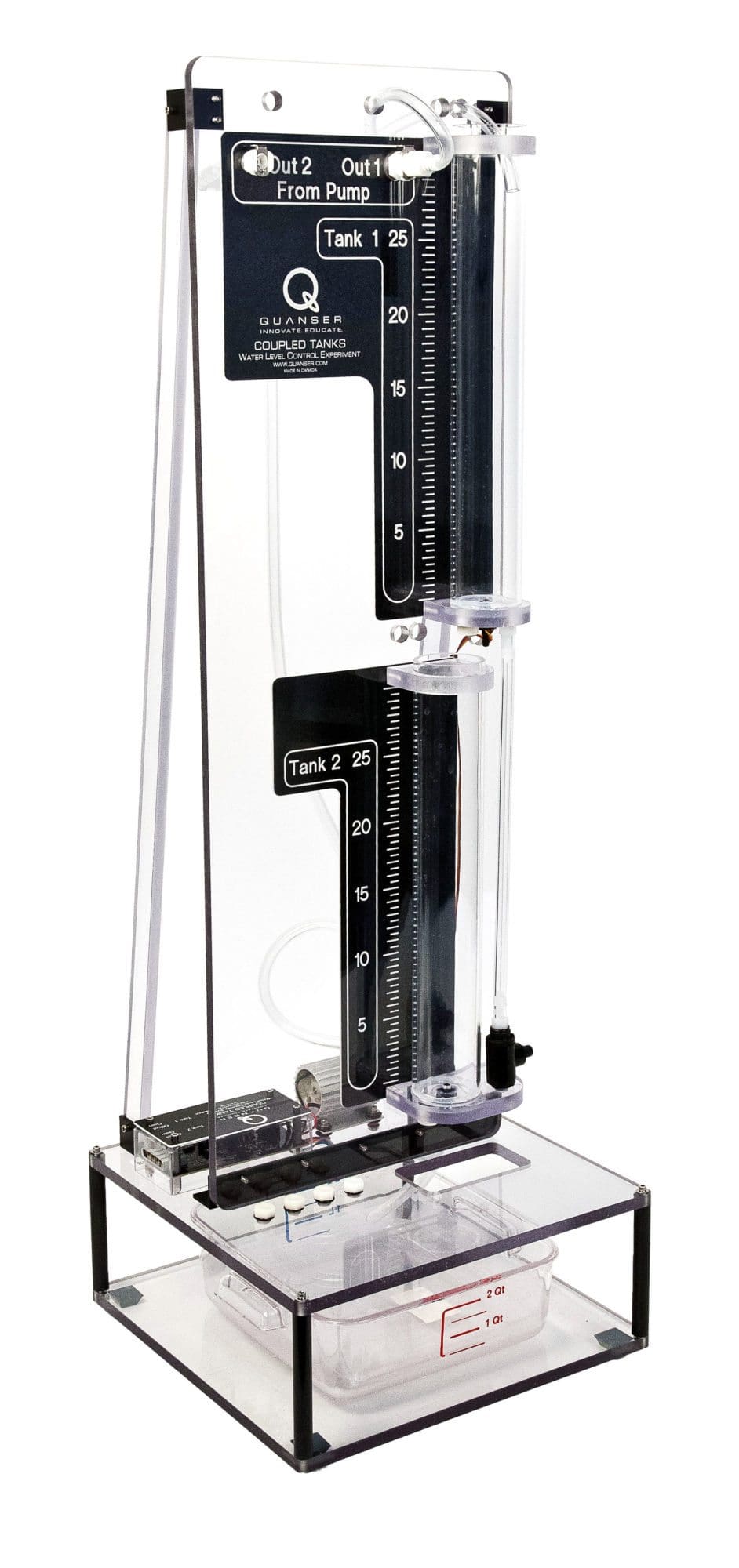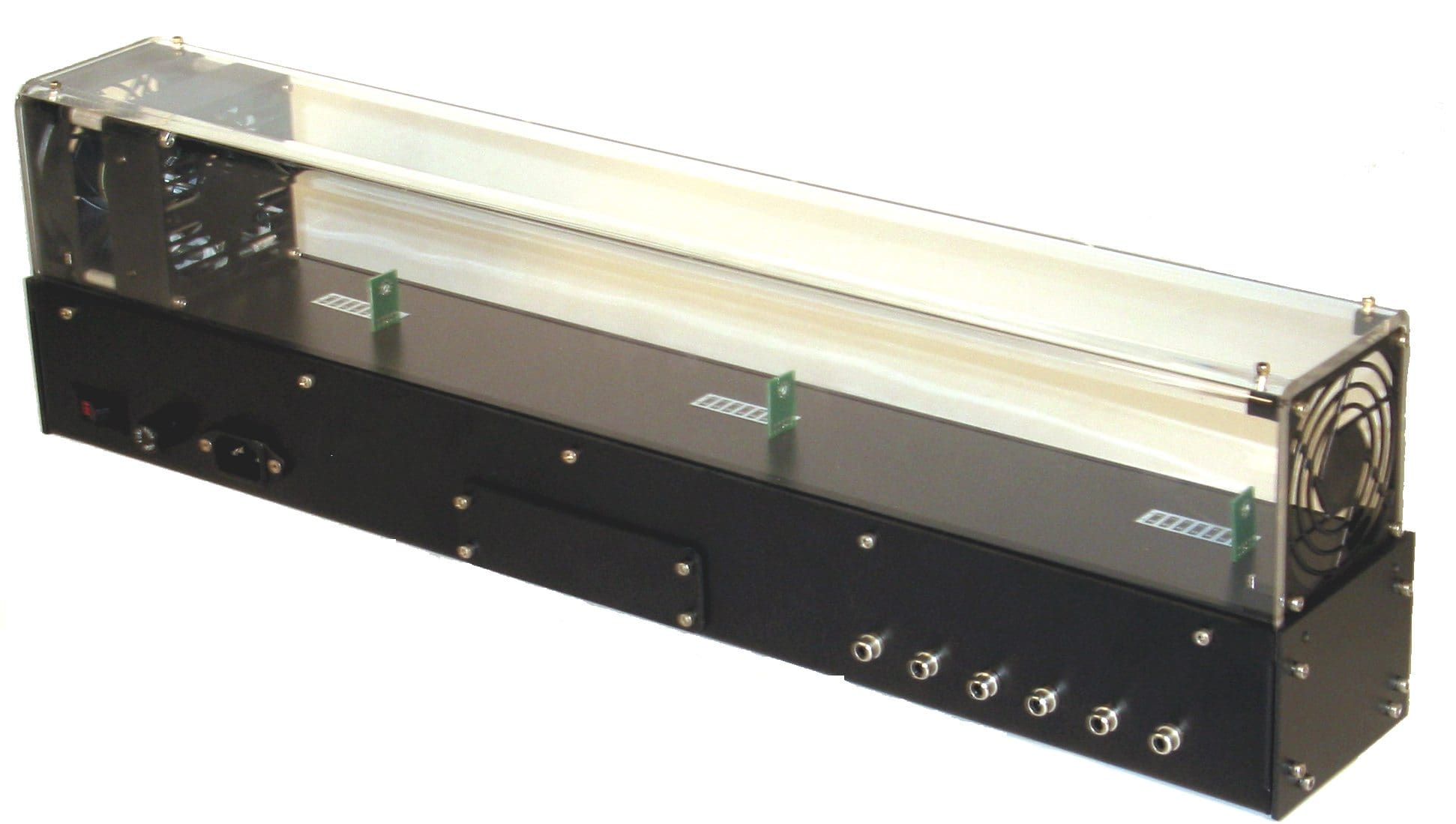Magnetic Levitation
Electro-mechanical experiment for nonlinear dynamics and control
The Quanser Magnetic Levitation device is a single degree of freedom electromagnet-based system that allows users to levitate a ball vertically up and down. The overhead electromagnet generates an attractive force on the metal ball that initially sits on the post. The position of the ball is measured using a photo-sensitive sensor embedded inside the post. The system also includes a current sensor to measure the current inside the electromagnet’s coil.
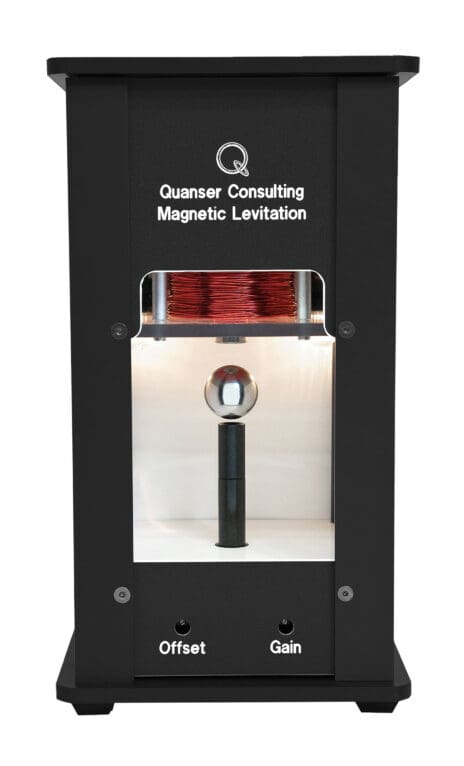
Product Details
The force between electromagnet and ball is highly nonlinear. Further, the electromagnet itself has its own dynamics that must be compensated for. The challenging dynamics of the system make it perfect for teaching modeling, linearization, current control, position control, and using multiple loops (i.e. cascade control). It could also be used to test and implement more advanced control strategies, such as multi-variable, gain scheduling, and nonlinear control.
- One degree of freedom
- Electromagnet made up of a solenoid coil and steel core
- Photo-sensitive ball position sensor
- Ball position sensor can be calibrated according to lighting conditions
- Analog coil current sensor
| Device mass | 3.8 kg |
| Dimensions (H x W x L) | 15.1 cm x 15.1cm x 27.6 cm |
| Ball position sensor sensitivity | 0.28 cm/V |
| Coil inductance | 412.5 mH |
| Coil resistance | 10 Ω |
| Number of turns in the coil wire (approximate) | 2450 |
| Coil length | 8.25 cm |
| Coil steel core radius | 0.8 cm |
| Electromagnet force constant | 6.53 x 10–5 N.m²/A² |
| Current sense resistance | 1 Ω |
| Steel ball radius | 1.27 cm |
| Steel ball mass | 0.068 kg |
| Steel ball travel | 1.4 cm |
| Magnetic permeability constant | 4π x 10-7 H/m |
- Derivation of dynamic model from first-principles
- Transfer function representation
- Linearization
- Current control
- Position control
- PID
- Feed-forward
- Control parameter tuning
The following additional components are required to complete your workstation, and are sold separately:
For Simulink
- QUARC® add-on for MATLAB®/Simulink®
- Quanser VoltPAQ-X1 linear voltage amplifier
- One of the following DAQ devices:
- Quanser Q2-USB
- Quanser Q8-USB
- Quanser QPIDe
For LabVIEW
- Quanser Rapid Control Prototyping (Q-RCP) Toolkit® add-on for NI LabVIEW™
- Quanser VoltPAQ-X1 linear voltage amplifier
- One of the following DAQ devices:
- NI CompactRIO with two Quanser Q1-cRIO modules
- NI myRIO with Quanser Terminal Board
- Quanser Q2-USB
- Quanser Q8-USB
- Quanser QPIDe
